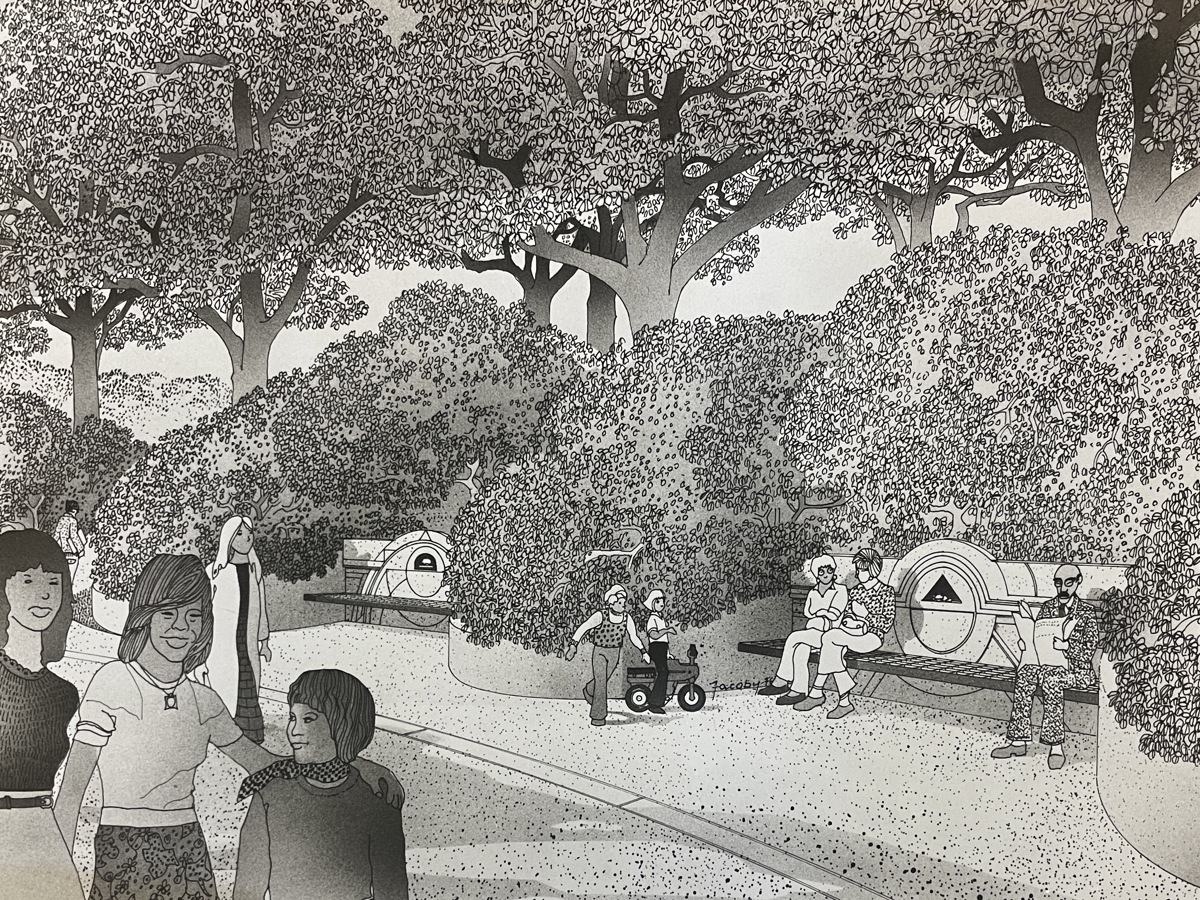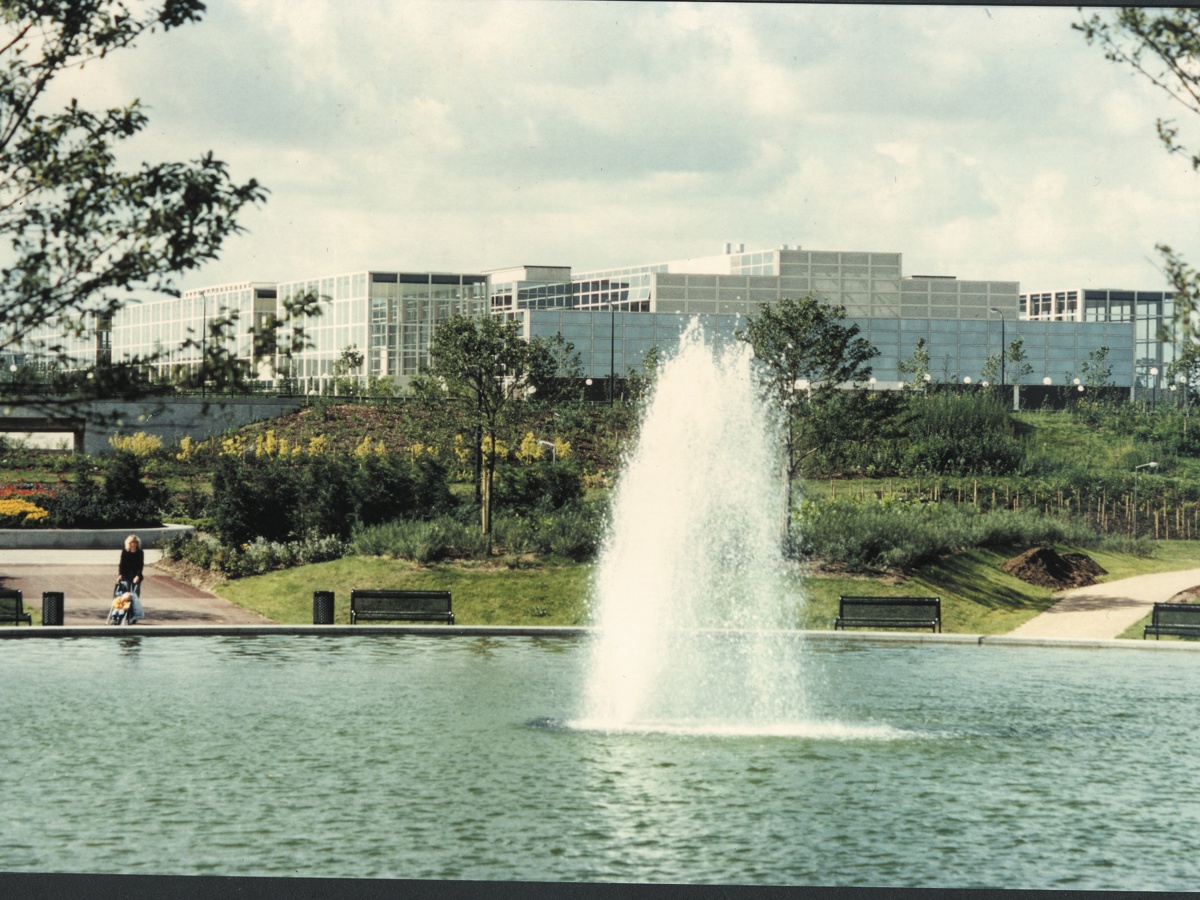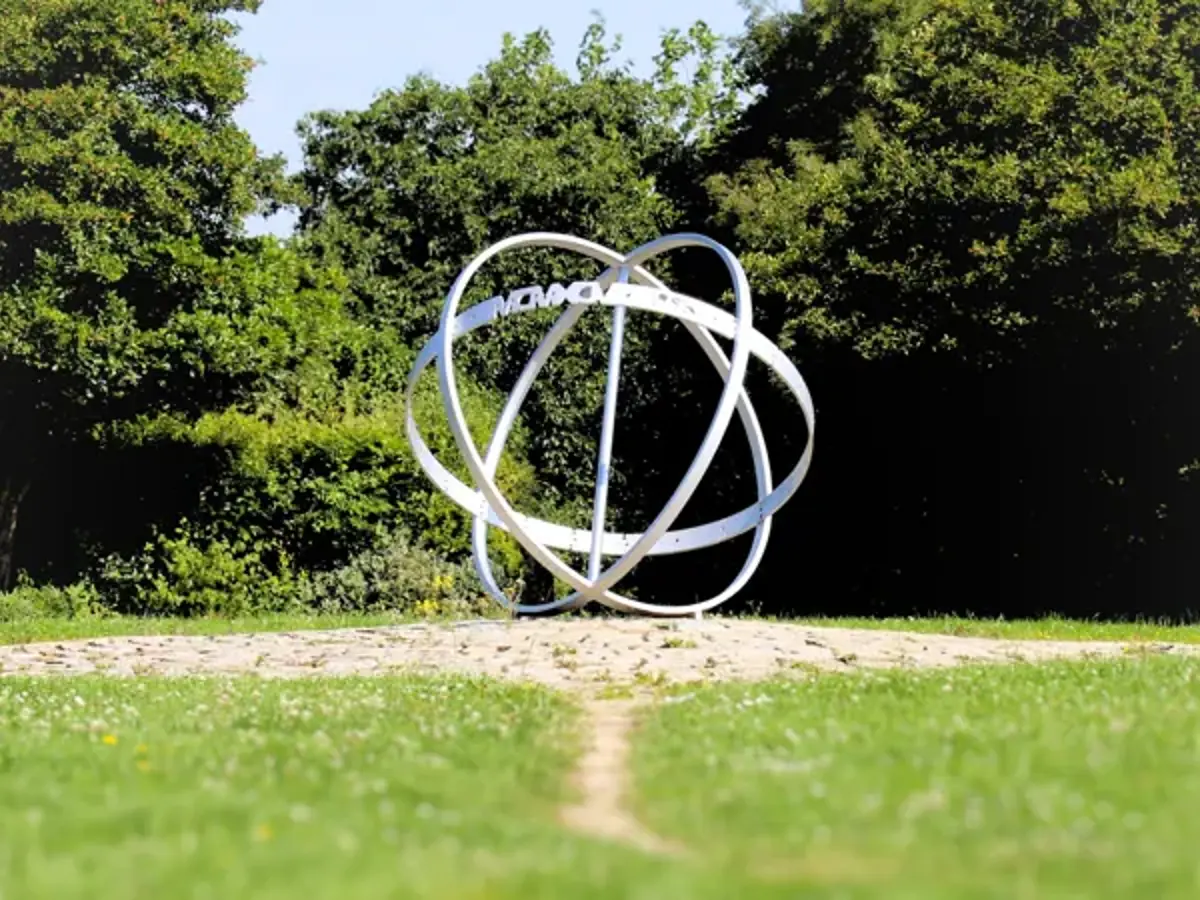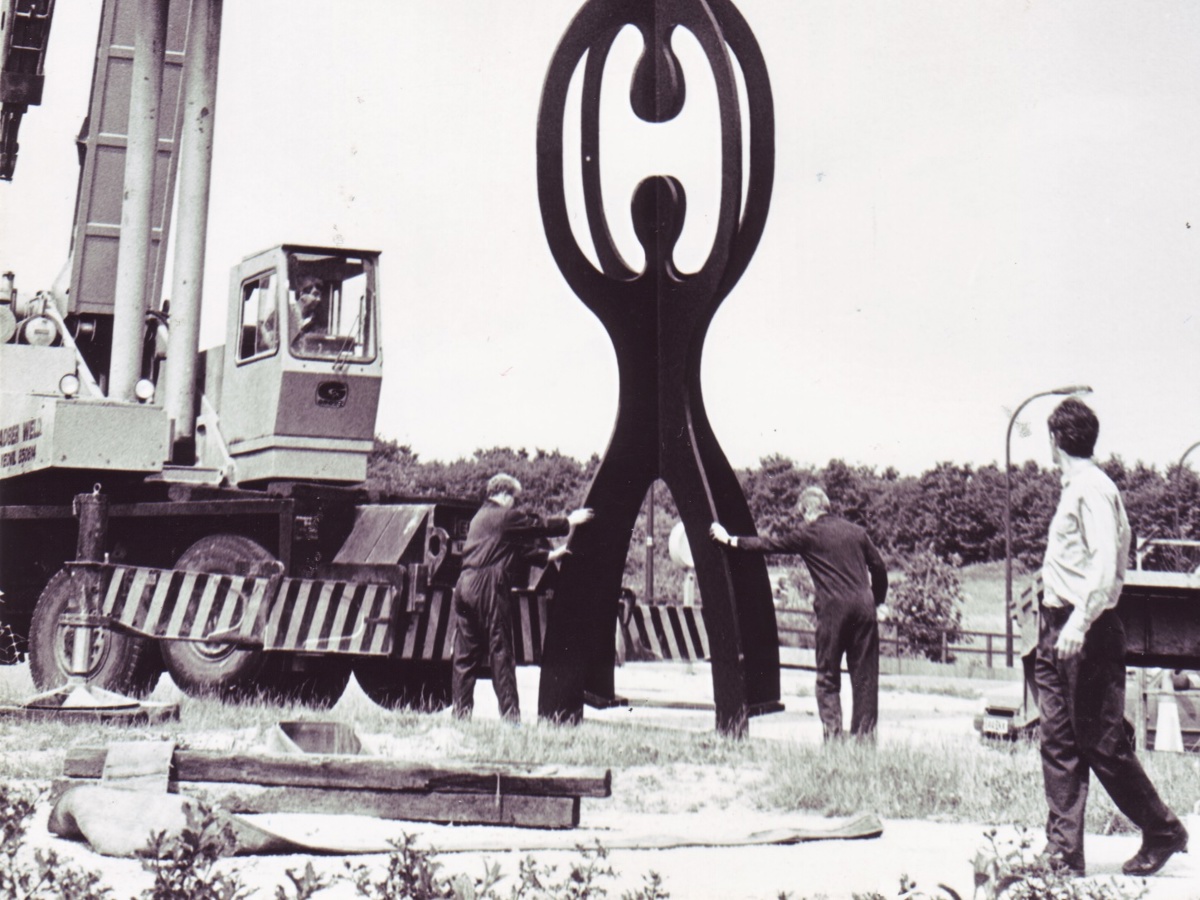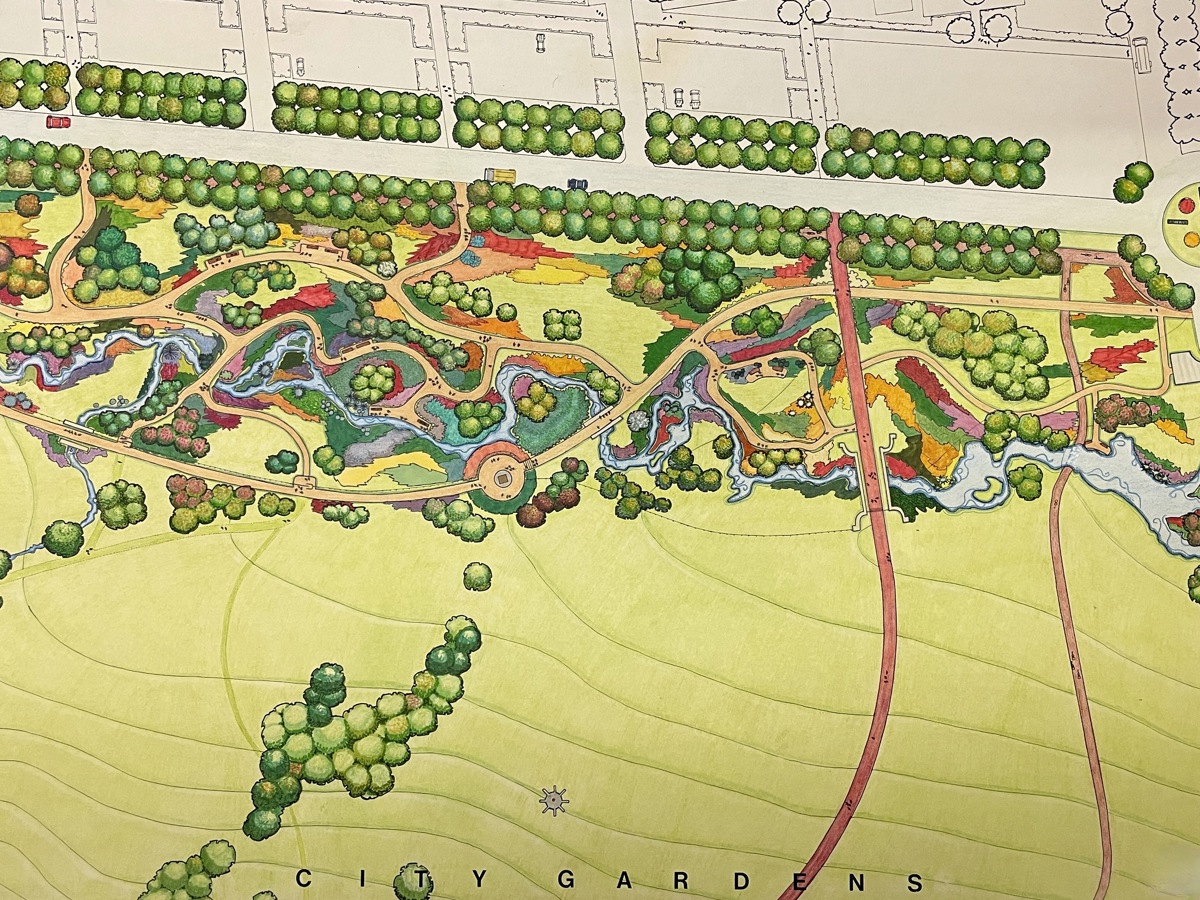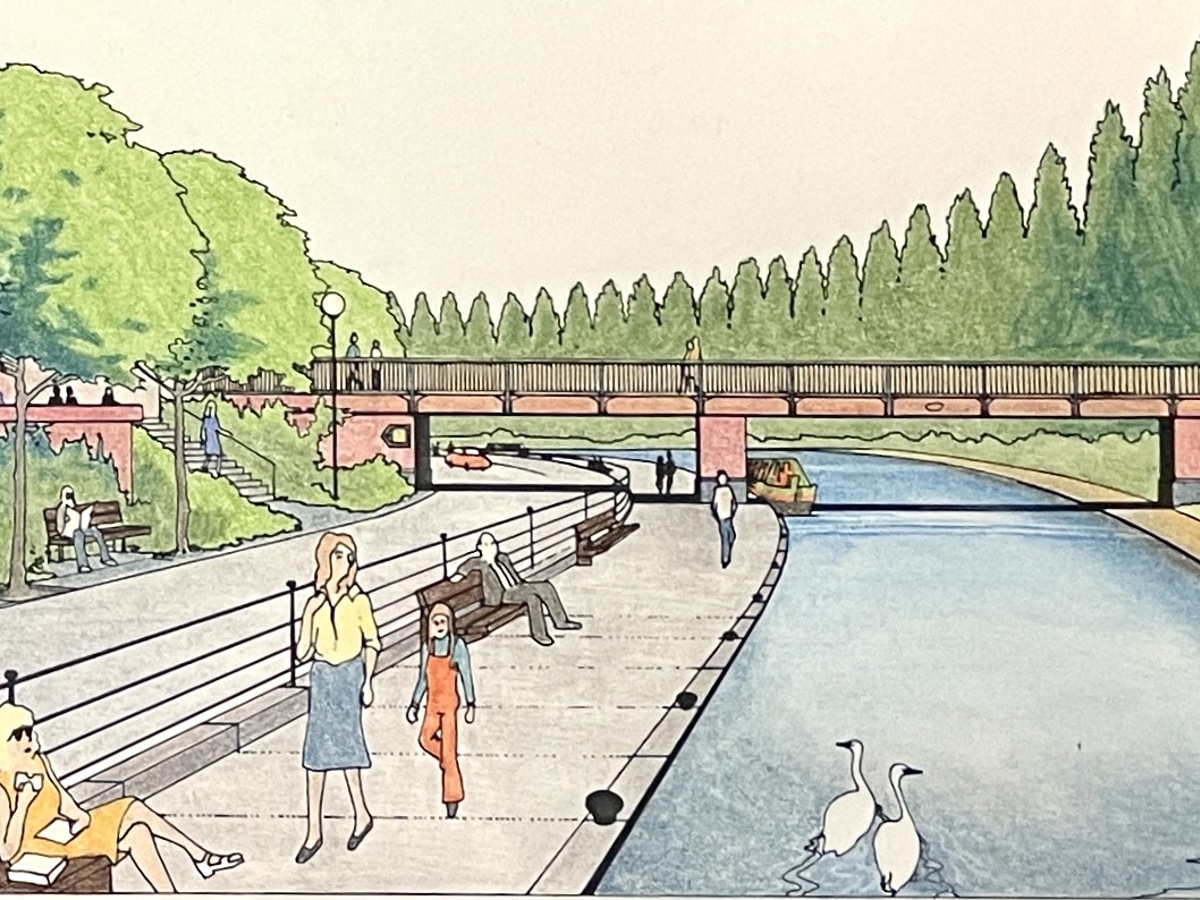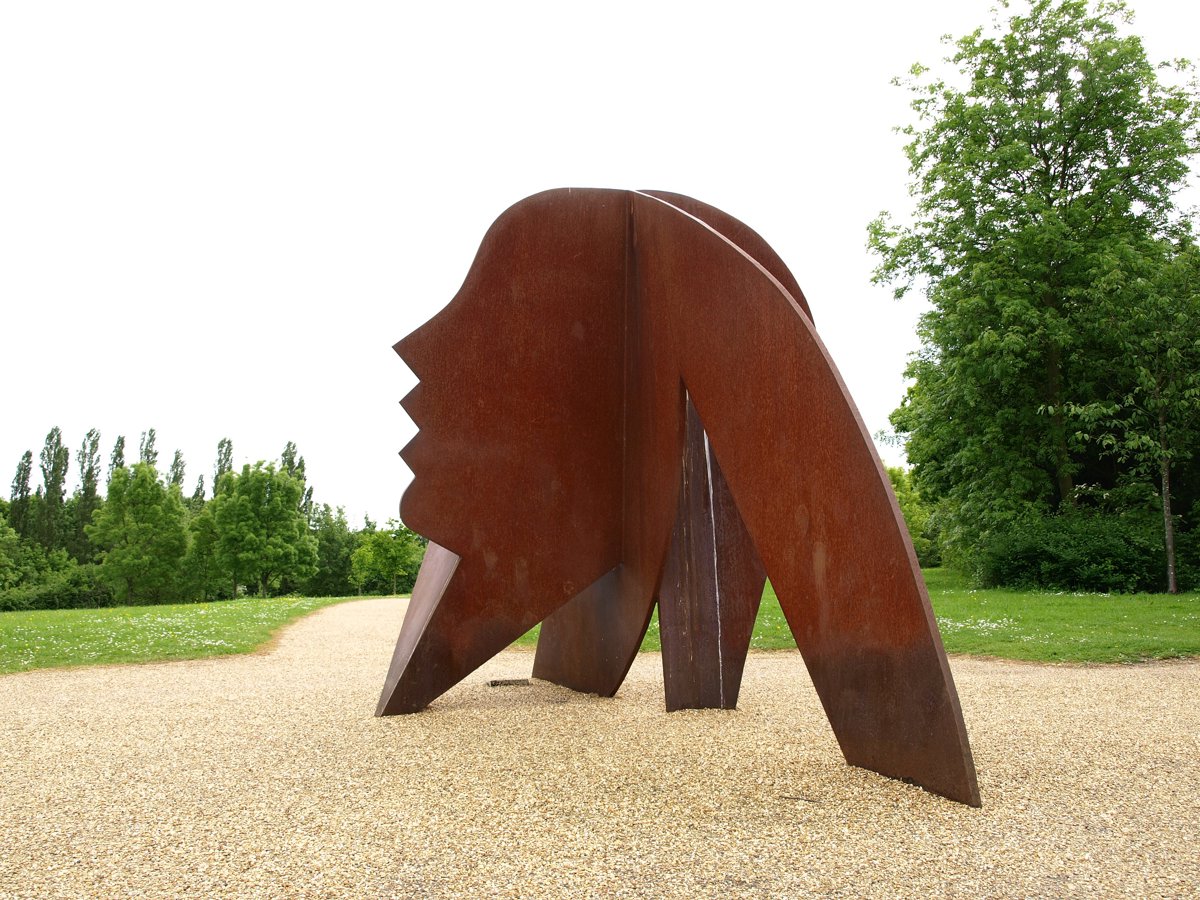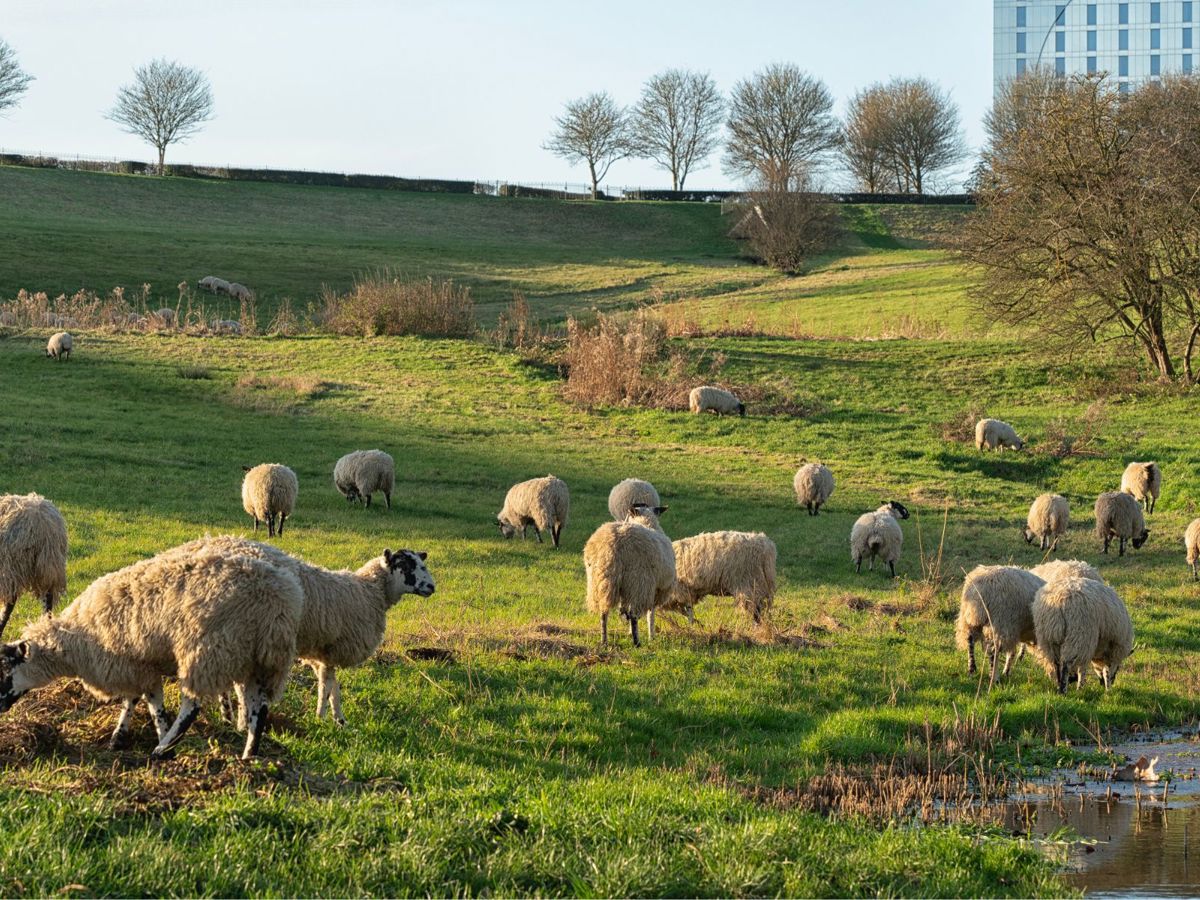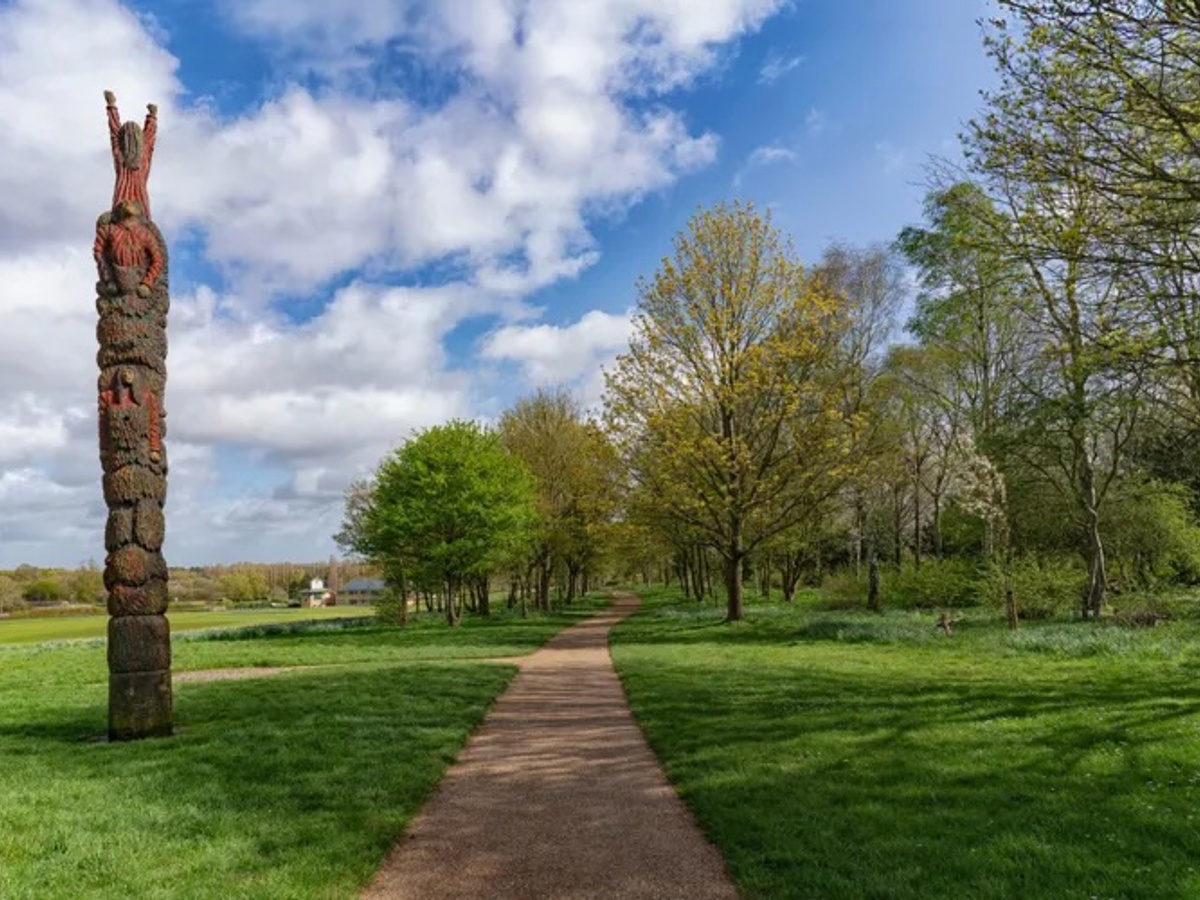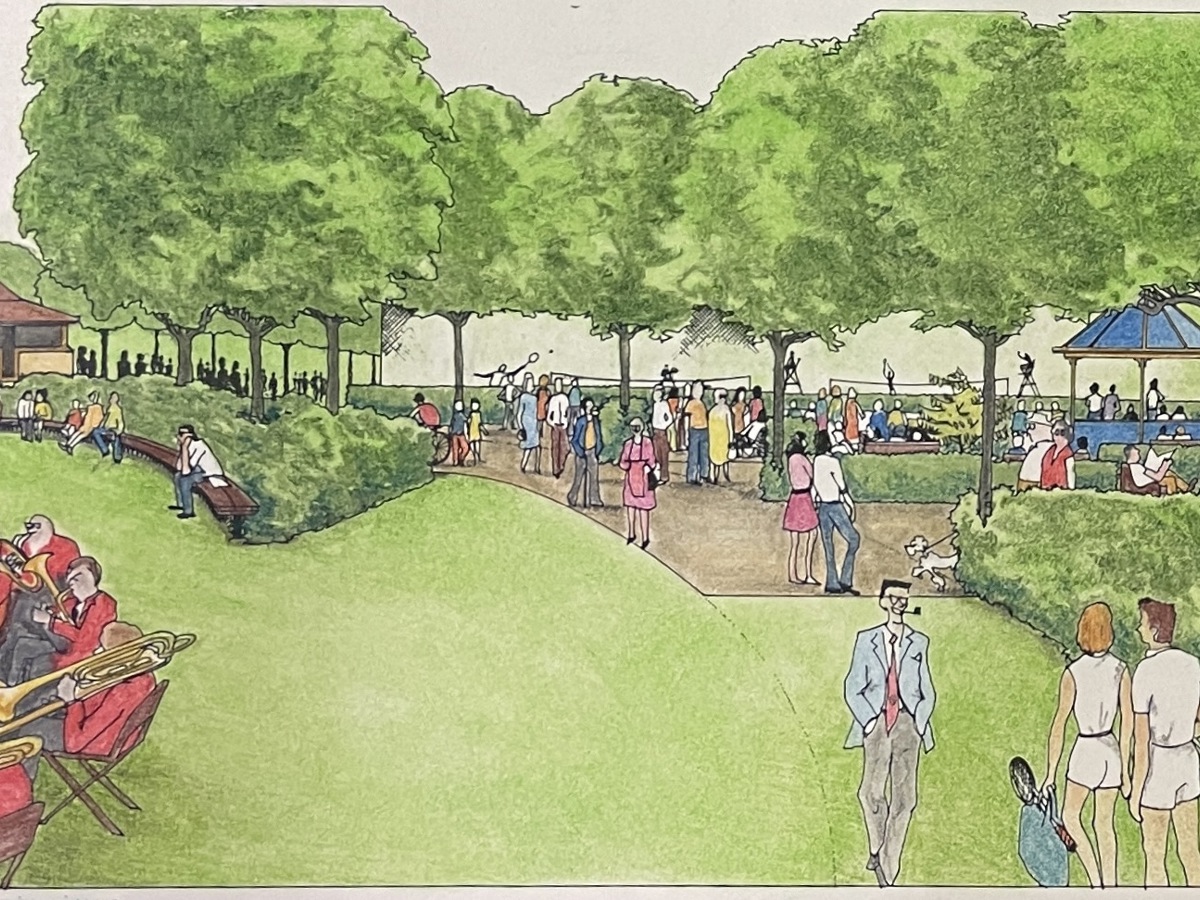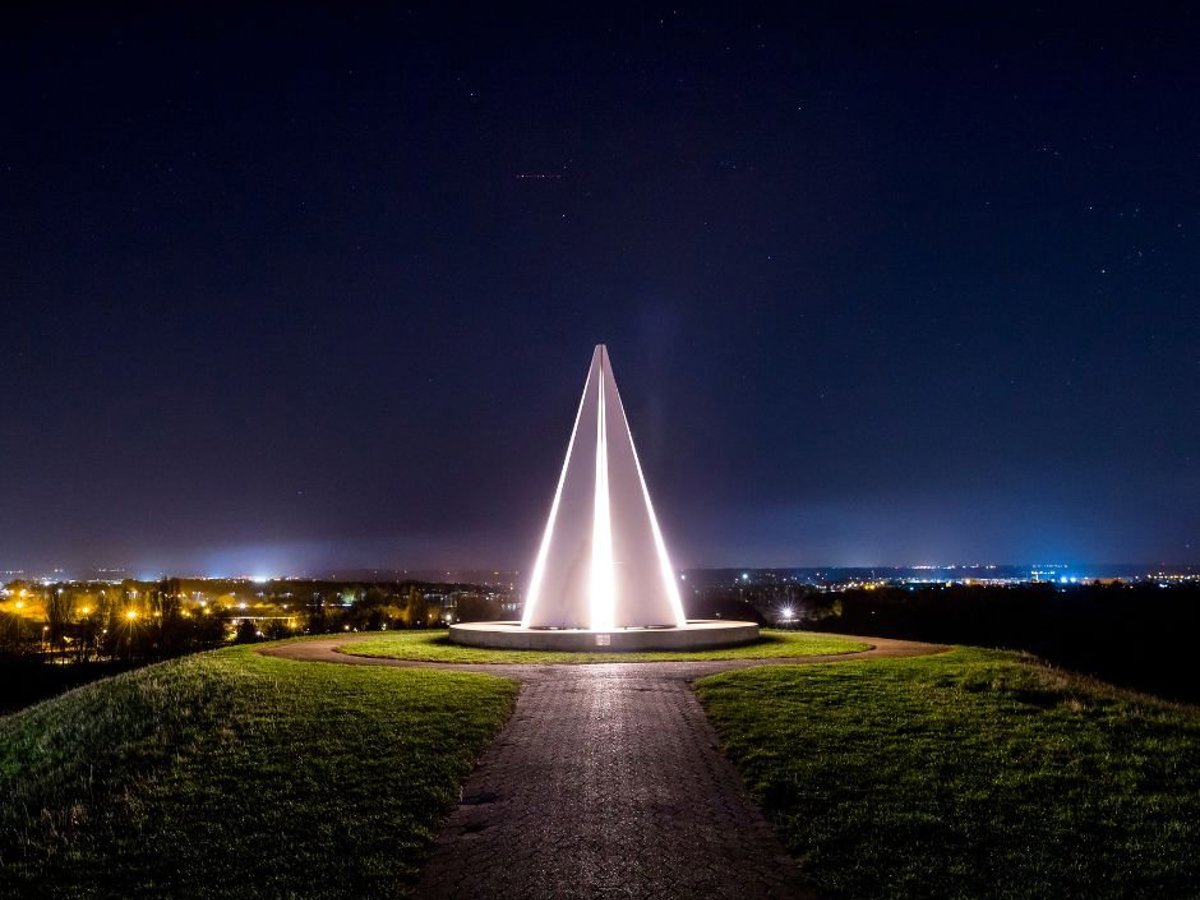Vision in the Park
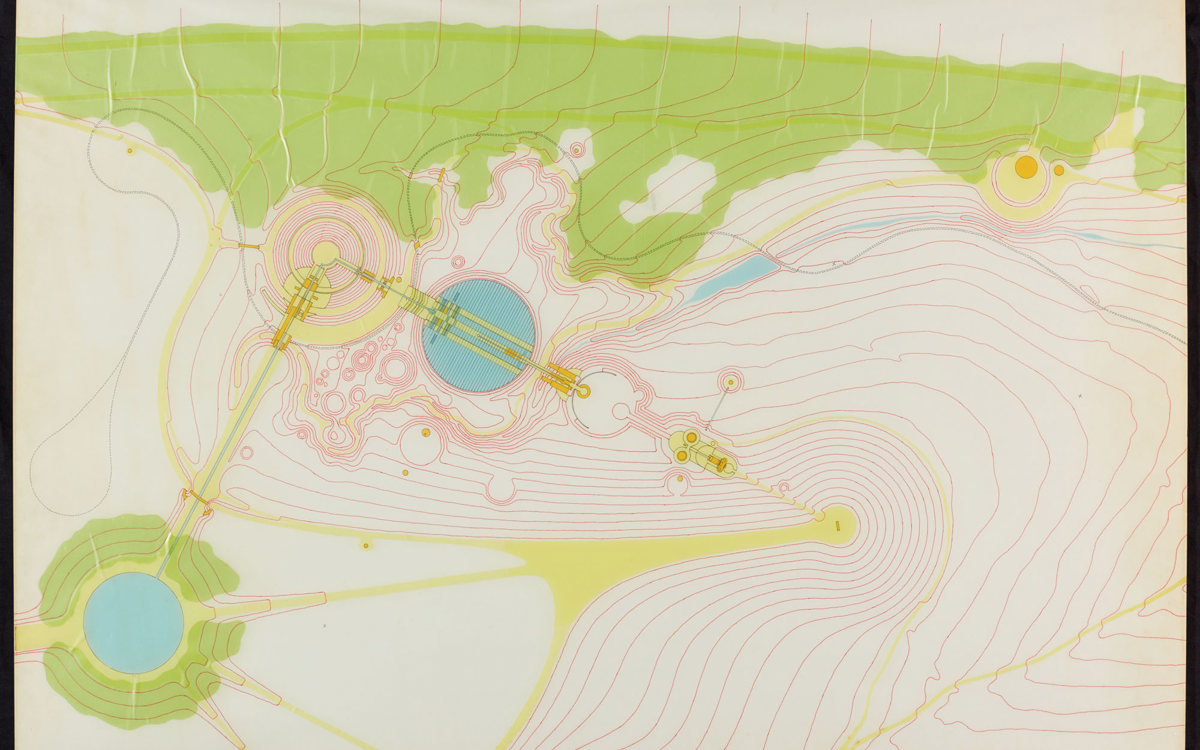
The Belvedere is one of the most striking pieces of landscaping in the city. The collection and depositing of surplus soil from the surrounding grid roads was carefully planned, modelled, and executed by the MKDC designers and engineers.
The gently sloping fields were thereby transformed into this steeply inclined promontory with a sweeping vista across the city and views beyond to Bedfordshire.
Image 1: City Centre Park: Sketch for Earthworks showing the contours of the belvedere in relation to the cone and water features. The topology recalls Ebeneezer Howard’s Garden Cities of Tomorrow diagram showing “the correct principle of a city’s growth”. (© Milton Keynes Development Corporation. Crown Copyright).
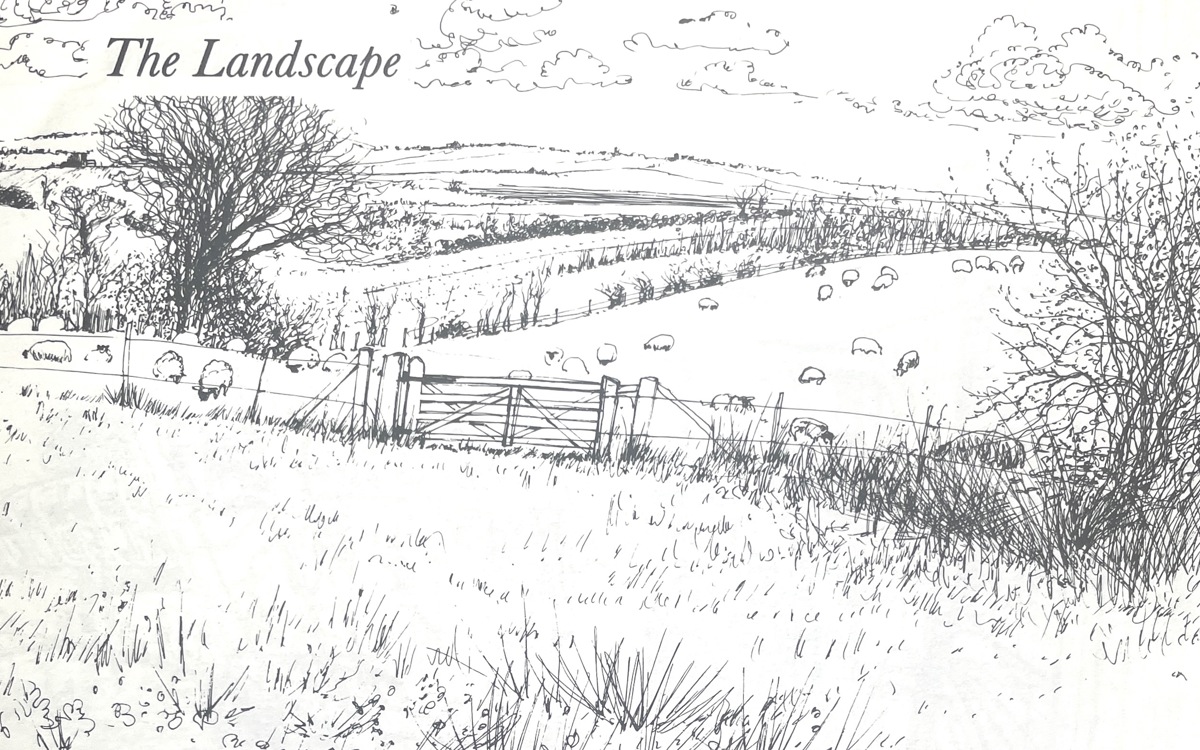
Eugene Fisk, artist in residence in Milton Keynes in the early 1980s, documented many of the transformations from Buckinghamshire landscape to Milton Keynes cityscape, and was enamoured by the view from Belvedere.
"A broad example of the original landscape can be seen a few paces from the City Centre. Take a short walk from John Lewis' and go in the direction of the Belvedere, cross over Marlborough Street to the formally arranged gardens and continue to the grass covered mound. There the surrounding land will open its palm to you. Close by sheep graze beside groves of small twisting trees and shrubs. Further away a loop of the canal glimmers in the light. In the distance is the M1, its urgent stretch easily incorporated into the breadth of the landscape, into its seasonal, ancient life. To the left is the town of Newport Pagnell contained by surrounding fields and centralized by its church. In the middle ground is the classical dignity of Willen Church tower, sentinel trees to one side. To the right of this the levels of Willen Lake indicate changes to the pre-1970 landscape, but the past has not been removed. The land still seems to breathe and live, quietly integrating into itself what succeeding ages introduce." Eugene Fisk
Image 2: Fisk, E Milton Keynes: A Personal View, Milton Keynes Peoples Press 1981
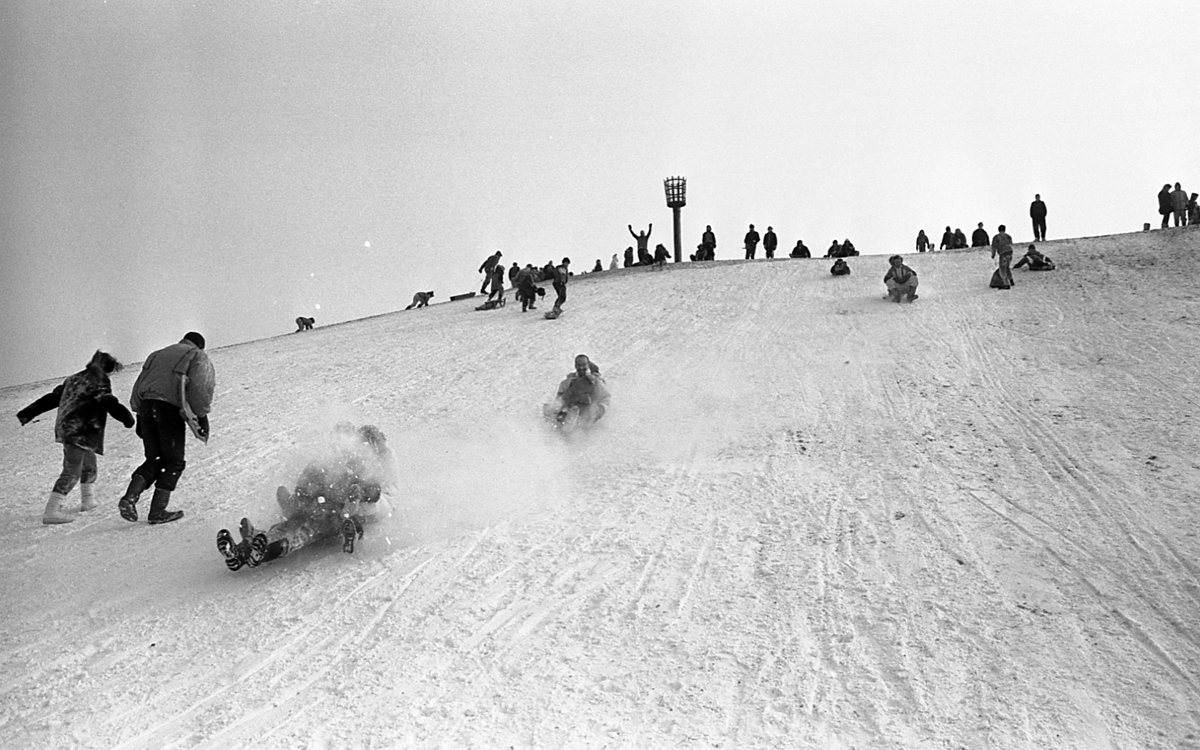
Much of Fisk’s enthusiasm can still be appreciated but, with the landscape now maturing, the Belvedere is also a good spot to pick out some of the Park’s sculptures and planting schemes.
From early Spring the slopes are often dotted with the sheep that are brought into the meadow to manage the grass growth, in summer the park is populated by picnickers, while the winter months can bring impromptu parties of sledgers to make the most of the frozen inclines.
Image 3: Snow on the Belvedere (Living Archive: 2141g)
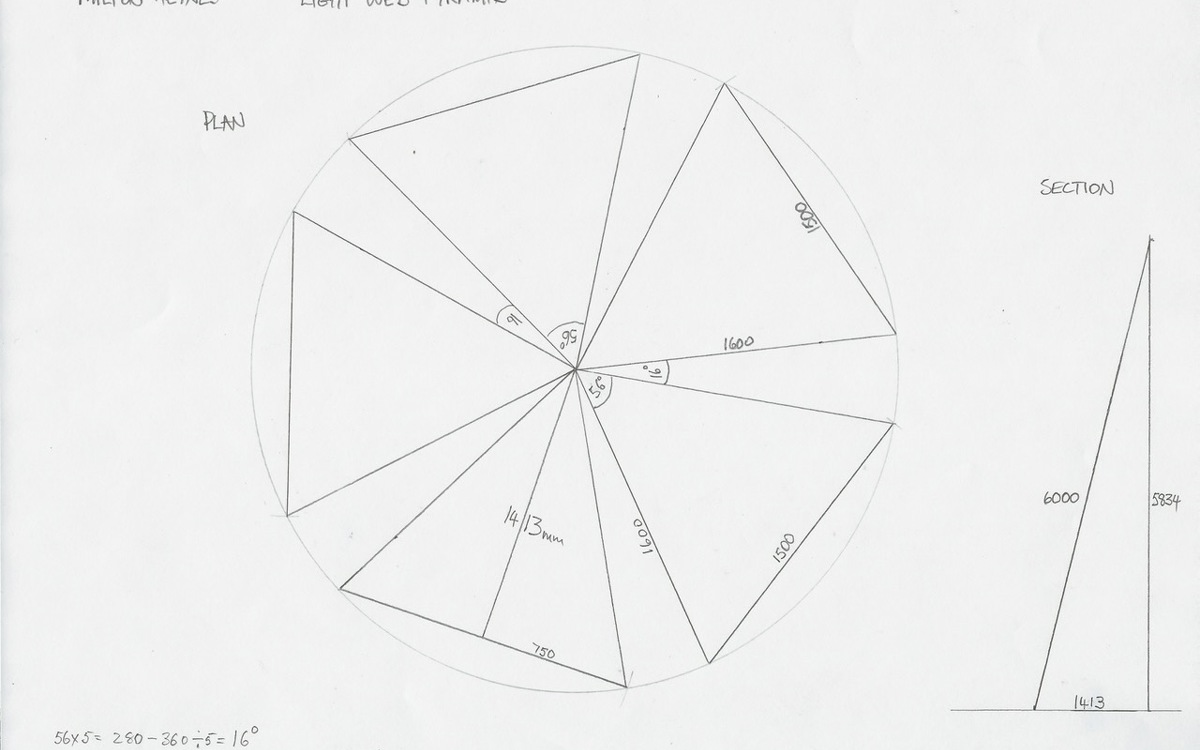
Campbell Park has long been a place for people to gather, not just for the views but also to commemorate events. In July 1988 a basket fire beacon was lit on the Belvedere, one of the 461 in a national network of beacons installed to celebrate the 400th anniversary of the battle against the Spanish Armada. Struck by lightning for the second time in 2002, the beacon basket was removed to Milton Keynes Museum and replaced in 2012 by Liliane Lijn’s Light Pyramid.
Image 4: Section and Plan Drawing of the Milton Keynes Light Web Pyramid (Liliane Lijn)
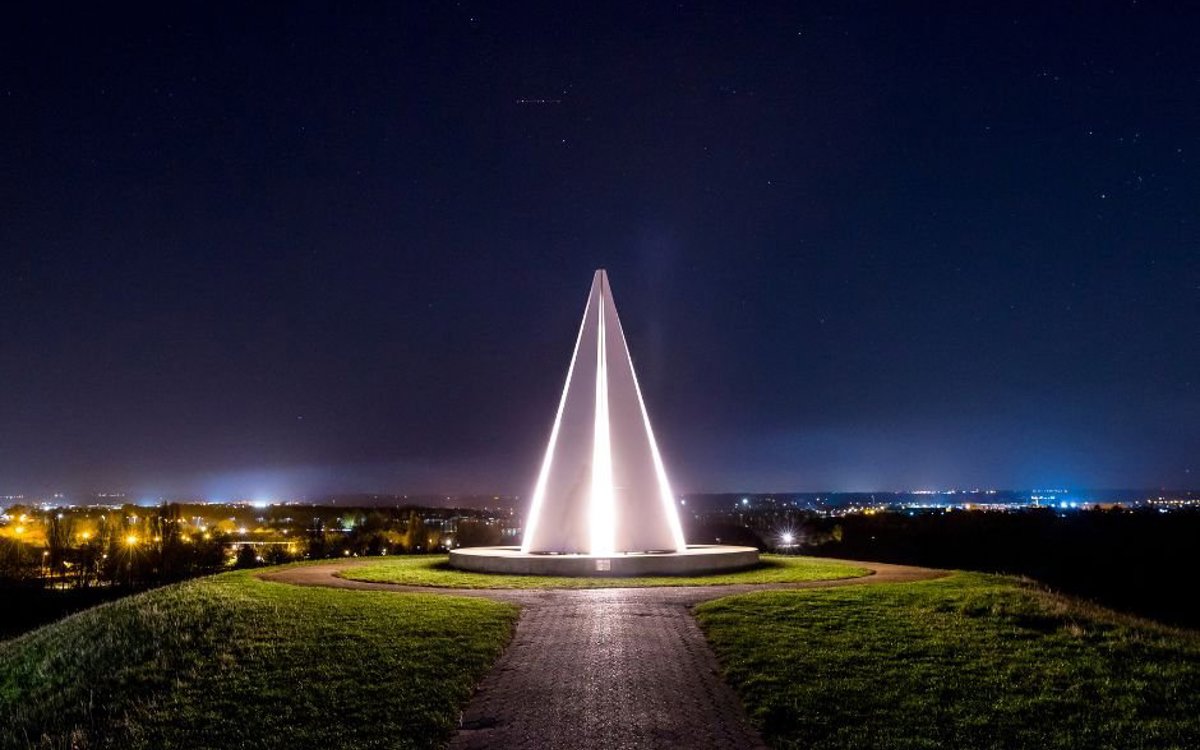
Five triangular steel wedges rise up from the Belvedere, meeting at their six meter high centre to form a pyramid. Appearing like a church spire on the horizon, the gaps between each wedge allow light to emanate from within. The solid geometry of the pyramid thereby seems to be protecting its soft inner body. Lijn describes her work as a way of revealing the relationship between outer form and inner content, of exploring the differences between the two. Taking a wider view, from the perspective of its setting in Milton Keynes, the work seems to symbolise a relationship between the visible external form of the city, with its master plans and its roundabouts, and the spirit of the people who live here.
Image 5: Light Pyramid by Liliane Lijn (Destination MK)
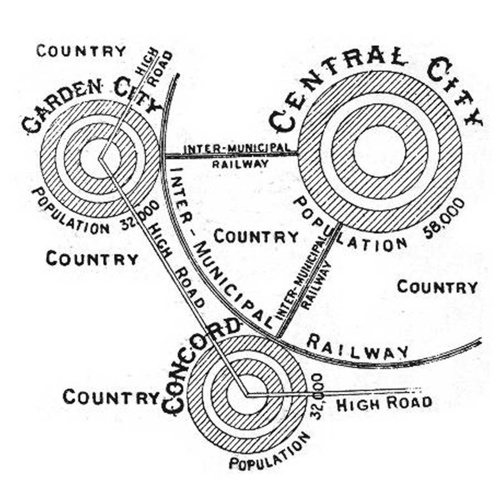
Image 6: Ebeneezer Howard’s diagram “illustrating correct principle of a city’s growth – open country ever near at hand and rapid communication between off-shoots” (Ebeneezer Howard, Garden Cities of Tomorrow, 1902)

Image 7: MKDC model of Campbell Park looking towards the belvedere (© Milton Keynes Development Corporation. Crown Copyright).
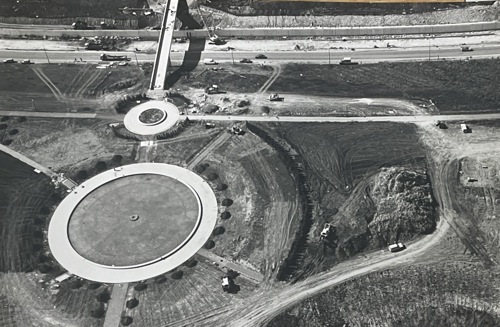
Image 8: Final construction works at Campbell Park, with the V8 running along the top of the image. (© Milton Keynes Development Corporation. Crown Copyright).
Follow the Campbell Park Trail to discover the history of this Grade II listed landscape. Featuring archive photos and videos with the people who helped make the park what it is today.

